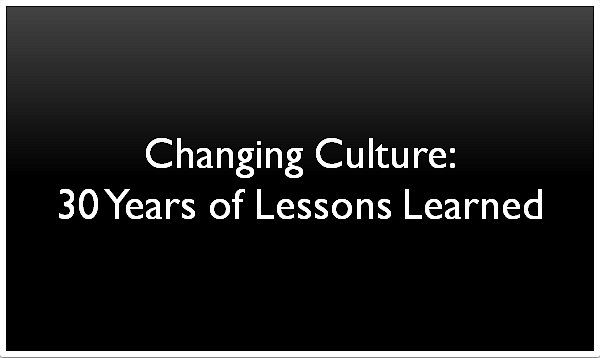
How To Create A Company Culture Of Transparency
How To Create A Company Culture Of Transparency
Managing the Rumor Mill (Example)
There are a lot of rumors flying around this organization. Some are based in fact but many are pure speculation. On principle, I have refused to participate in or acknowledge rumors. I share the information that I can when I am able to do so. However, I have been told that people in my department are hearing about things from others before they hear them from me. They interpret this as I am being secretive and/or don’t trust them to be discrete. They wonder why other people are being told things and they aren’t.
The behavior I am going to start, stop or continue doing every day is….
Walk around and ask people what rumors are going around.
- I am going to let people know when I plan to update them on the rumors and answer questions they may have. I am going to include the reasons for the timing emphasizing that I will share the information I can with them as soon as I am in a position to do so.
- I will always tell them what I can even if it is only to say when I will be in a position to share the information with them and why.
- I will not say ‘no comment’, become defensive or ‘play dumb’ as this will ruin my credibility and/or cause increased frustration.
- If there are things that I can address immediately, I will do so and follow-up with an e-mail to my entire team.
Eat my lunch in the cafeteria so that I can speak with people in my department about their questions and concerns.
- I am going to sit with a different group every day, if possible.
- I will ask them questions about things they are hearing, the rumors that are circulating and so on.
- I am going to listen to what they have to say and let them know what and when they can expect to hear something.
- I am going to use what I learn to develop a communication strategy with my team that will let people know what I am doing to address the rumors.
The practices I am going to use are…
Hold a weekly teleconference open to all employees in my business unit to address rumors and answer questions.
- This will continue until we are through the current slate of major changes being implemented in the organization.
- I will gradually extend the time between these sessions as appropriate to the level of activity in the rumor mill and changes being planned and implemented.
- I am going to invite people to send me their questions ahead of time either by e-mail or by anonymous written submission.
- I am not going to ask people to sign their names to encourage everyone to come forward with their concerns. Hopefully, in time, they will feel safe enough to sign their names.
Develop a communication plan that emphasizes things that my direct reports and their management teams can do to better communicate and manage the rumor mill.
- We know that people tend to speak more openly with others who they know and trust. I am personally too far removed from many of them to have this kind of open relationship.
- I am going to suggest that my direct reports meet with their teams on a weekly basis to identify questions and concerns that are circulating.
- We will review and discuss these as a team and develop a plan to address the issues and concerns that are identified.
- My role is to help the communicators (my direct reports and their management teams) to be consistent, timely and accurate in sharing information. I am going to ask my direct reports what assistance they need from me.
Request that my direct reports send me a short e-mail when they hear a rumor that is circulating in my organization.
- I am not ‘in the loop’ as to what all of the issues and concerns are which makes it difficult to know what people are thinking.
- I am going to ask them to flag ‘hot’ issues that are causing a lot of angst and negatively affecting productivity so, if needed, I can address them or escalate them so that they can be dealt with as quickly as possible.
Send an e-mail to my direct reports as soon as information is available that can be shared with employees.
- If needed, I will make myself available for a call to answer questions and, if appropriate, make sure that the information is communicated in an accurate and consistent manner.
- My expectation is that my direct reports will immediately host a conference call with their team and/or all employees in their departments to share the information that has been made available.
- My weekly conference call (see above) will be used to clarify the situation and answer any remaining questions or concerns.
The action strategy I am going to use is…
Provide managers in my business unit with training on how to handle rumors effectively.
- I am going to ask Human Resources to help me identify a trainer who can work with me to tailor a workshop that addresses the situation in our organization and also includes some communication skills training.
- This needs to be completed quickly so that my direct reports and their managers are capable of executing the communication plan including managing rumors that are circulating.
I will know I have achieved my goal when….
- We are identifying and effectively dealing with rumors that emerge and circulate in the organization.
- More importantly, we are communicating in a manner that makes the rumor mill redundant. Employees are hearing what they need to hear and trust that we are telling them everything we can as soon as it is possible to do so. Instead of participating in the rumor mill, they are going to their manager or myself with their questions and concerns.









